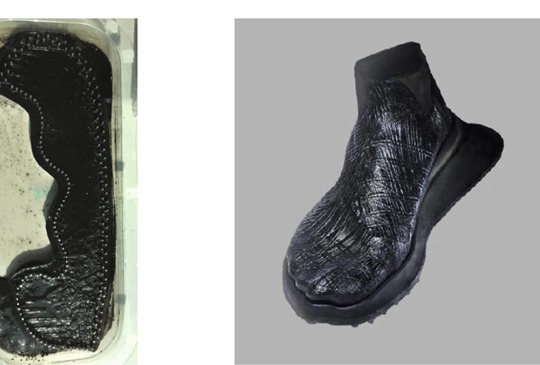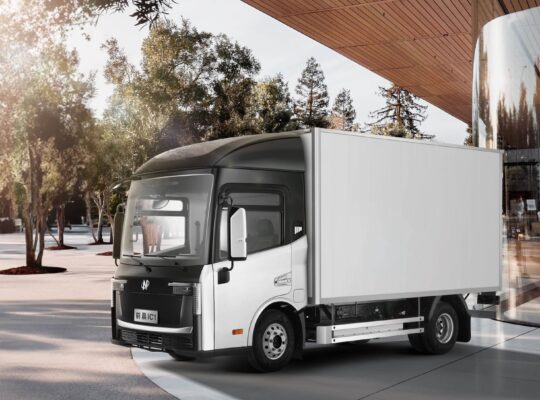Wireless charging technology will soon revolutionize the electric vehicle (EV) industry, providing convenient and efficient ways to charge EVs without needing physical connectors or cables. While wireless charging has been widely adopted for small devices, its application in larger vehicles such as trucks, ferries, and buses is gaining momentum.
Evolution of Wireless Charging for EVs
Wireless charging for EVs has come a long way since its inception. The early wireless charging systems have been primarily used for small gadgets such as smartphones and electric toothbrushes. However, with technological advancements and increasing demand for sustainable transportation solutions, wireless charging is now entering the EV industry.
The evolution of wireless charging for EVs has been driven by the need for more efficient and convenient charging methods. Traditional charging methods using physical connectors or cables can be cumbersome, time-consuming, and prone to wear and tear. Wireless charging eliminates these issues by allowing EVs to charge simply by parking over a charging pad or driving over a charging track embedded in the road surface.
Benefits of Wireless Charging for EV Trucks, Ferries, and Buses
Wireless charging offers several benefits for EV trucks, ferries, and buses, making it an attractive option for the transportation industry. Some of the key benefits include:
- Efficiency: Wireless charging is now highly efficient, with up to 95% power transfer efficiency. This means that the EV charges just as fast as a plug-in charger.
- Convenience: Wireless charging eliminates the need for physical connectors or cables, making charging EVs easier and more convenient. EV trucks, ferries, and buses can park over a charging pad or drive over a charging track, reducing downtime and increasing productivity.
- Safety: Wireless charging systems are designed with safety features such as overheat protection and foreign object detection, ensuring safe and reliable charging for EVs.
- Scalability: Wireless charging can be easily scaled up or down to meet the changing needs of different EV types, making it suitable for a wide range of applications and vehicle types.
- Cost-effectiveness: While the initial installation cost of wireless charging infrastructure may be higher than traditional charging methods, the long-term cost of operation and maintenance can be lower due to reduced wear and tear on physical connectors or cables. In the case of public charging infrastructure, vandalism is reduced. Repair and loss of revenue due to downtime are eliminated.
Challenges and Limitations of Wireless Charging for EVs
Despite its many benefits, EV wireless charging also faces challenges and limitations. Some of the key challenges and limitations include:
- Cost: The initial installation cost of wireless charging infrastructure can be higher than traditional charging methods, which may pose a barrier to widespread adoption, especially for smaller fleets of EV trucks, ferries, and buses.
- Standardization: There is currently a lack of standardized wireless charging protocols and systems, which can limit the interoperability and compatibility of different wireless charging systems. This can pose challenges for fleet operators and manufacturers in choosing the right wireless charging solution for their EVs.
- Infrastructure: The availability and accessibility of wireless charging infrastructure may vary depending on the region or location, which can affect the feasibility and practicality of using wireless charging for EVs in certain areas.
- Electromagnetic Interference: Wireless charging systems rely on electromagnetic fields to transfer power, which can potentially interfere with other electronic devices or systems, requiring careful planning and installation to avoid interference issues.
- Maintenance: Wireless charging systems may have lower maintenance costs than traditional charging methods, but they still require regular maintenance and monitoring to ensure optimal performance and safety.
- Regulatory and Safety Standards: The regulatory and safety standards for wireless charging systems are still evolving and pose challenges for early adopters in ensuring compliance and safety for EV trucks, ferries, and buses.
Current Applications of Wireless Charging for EV Trucks, Ferries, and Buses
Despite the challenges, wireless charging has been increasingly adopted for EV trucks, ferries, and buses in various applications around the world. Some of the current applications of wireless charging for these larger vehicles include:
- Public Transportation: Several cities and municipalities have implemented wireless charging infrastructure for their public transportation systems, including electric buses and ferries. Wireless charging allows for efficient and convenient charging of these vehicles, reducing downtime and improving operational efficiency.
- Fleet Operations: Fleet operators for EV trucks and ferries have also started using wireless charging systems to streamline their operations. Wireless charging eliminates the need for physical connectors or cables, making it easier for EV trucks and ferries to charge while on the go, reducing downtime and increasing productivity.
- Ports and Depots: Ports and depots are crucial hubs for transportation and logistics, and wireless charging is now being used to charge EV trucks, ferries, and buses at these locations. Wireless charging allows for efficient and flexible charging of these vehicles, reducing the need for manual charging and increasing operational efficiency.
- Last-mile Delivery: Wireless charging is also used for last-mile delivery operations, where EV trucks and ferries transport goods from distribution centers to local destinations. Wireless charging allows for quick and convenient charging of these vehicles, ensuring efficient and sustainable delivery operations.
Future Prospects and Innovations in Wireless Charging for EVs
The future prospects of wireless charging for EV trucks, ferries, and buses are promising, with ongoing research and innovations aimed at overcoming the current challenges and limitations. Some of the key future prospects and innovations in wireless charging for EVs include:
- Improved Charging Speed and Power: Researchers and manufacturers are working on developing wireless charging systems that can provide higher power and faster charging speeds, allowing EV trucks, ferries, and buses to charge more quickly and cover longer distances on a single charge.
- Enhanced Interoperability and Standardization: Efforts are being made towards developing standardized wireless charging protocols and systems to ensure interoperability and compatibility among different charging systems. This can simplify the charging process and make it more convenient for EV truck, ferry, and bus operators.
- Increased Availability of Charging Infrastructure: As the adoption of EVs continues to grow, the availability of wireless charging infrastructure is expected to increase, making it more accessible and feasible for EV trucks, ferries, and buses to use wireless charging as a primary charging method.
- Integration with Renewable Energy Sources: Wireless charging can be integrated with renewable energy sources such as solar or wind power, further enhancing the sustainability of EV trucks, ferries, and buses. This can enable charging using clean energy, reducing the carbon footprint of transportation and promoting environmental sustainability.
- Automation and Smart Charging: Future innovations in wireless charging may also include automation and smart charging capabilities. This can include features such as automatic positioning and alignment of the charging coils, optimized charging schedules based on energy demand and grid availability, and remote monitoring and control of charging processes for improved efficiency and convenience.
- Vehicle-to-Grid (V2G) Integration: Wireless charging systems can also enable vehicle-to-grid (V2G) integration, allowing EV trucks, ferries, and buses to not only receive power from the grid but also contribute power back to the grid during periods of low demand. This can create a more resilient and decentralized energy ecosystem where EVs can serve as mobile energy storage and supply units.
- Innovation in Charging Infrastructure Design: The design and architecture of wireless charging infrastructure can also undergo innovation in the future. This can include the development of sleeker and more efficient charging pads or plates, underground charging systems, and integrated charging solutions in roadways or parking lots, making wireless charging more seamless and integrated into existing infrastructure.
- Advancements in Safety and Regulations: As wireless charging technology continues to evolve, advancements in safety features and regulations are expected. This can include improvements in electromagnetic shielding to reduce interference, standardized safety protocols for installation and operation, and regulatory frameworks to ensure the safe and reliable operation of wireless charging systems for EVs.
Conclusion
Wireless charging for EV trucks, ferries, and buses holds significant promise for the present and future of sustainable transportation. While challenges and limitations exist, ongoing research and innovations are driving the development of more efficient, convenient, and sustainable wireless charging systems. With improved charging speed and power, enhanced interoperability and standardization, increased availability of charging infrastructure, integration with renewable energy sources, automation and smart charging capabilities, V2G integration, innovation in charging infrastructure design, and advancements in safety and regulations, the future of wireless charging for EV trucks, ferries, and buses looks bright.
FAQs
- Is wireless charging only suitable for smaller electric vehicles like cars?
No, wireless charging technology is being developed and implemented for larger electric vehicles like trucks, ferries, and buses as well. It offers efficient and convenient charging solutions for these larger vehicles, reducing downtime and improving operational efficiency.
- Are there any safety concerns with wireless charging for EVs?
Like any other charging technology, wireless charging systems also have safety concerns that need to be addressed. However, advancements in safety features and regulations are being made to ensure the safe and reliable operation of wireless charging systems for EVs.
- Can wireless charging be integrated with renewable energy sources?
Yes, wireless charging can be integrated with renewable energy sources such as solar or wind power. This can promote the use of clean energy in charging EV trucks, ferries, and buses, reducing their carbon footprint and promoting environmental sustainability.
- Is wireless charging widely available for EV trucks, ferries, and buses?
While wireless charging is gaining traction for EVs, its availability may vary depending on the region or location. However, with the growing adoption of EVs, the availability of wireless charging infrastructure is expected to increase in the future.
- How can automation and smart charging enhance wireless charging for EVs?
Automation and smart charging can enable features such as automatic positioning and alignment of charging coils, optimized charging schedules based on energy demand and grid availability, and remote monitoring and control of charging processes. This can improve the efficiency and convenience of wireless charging for EV trucks, ferries, and buses.










